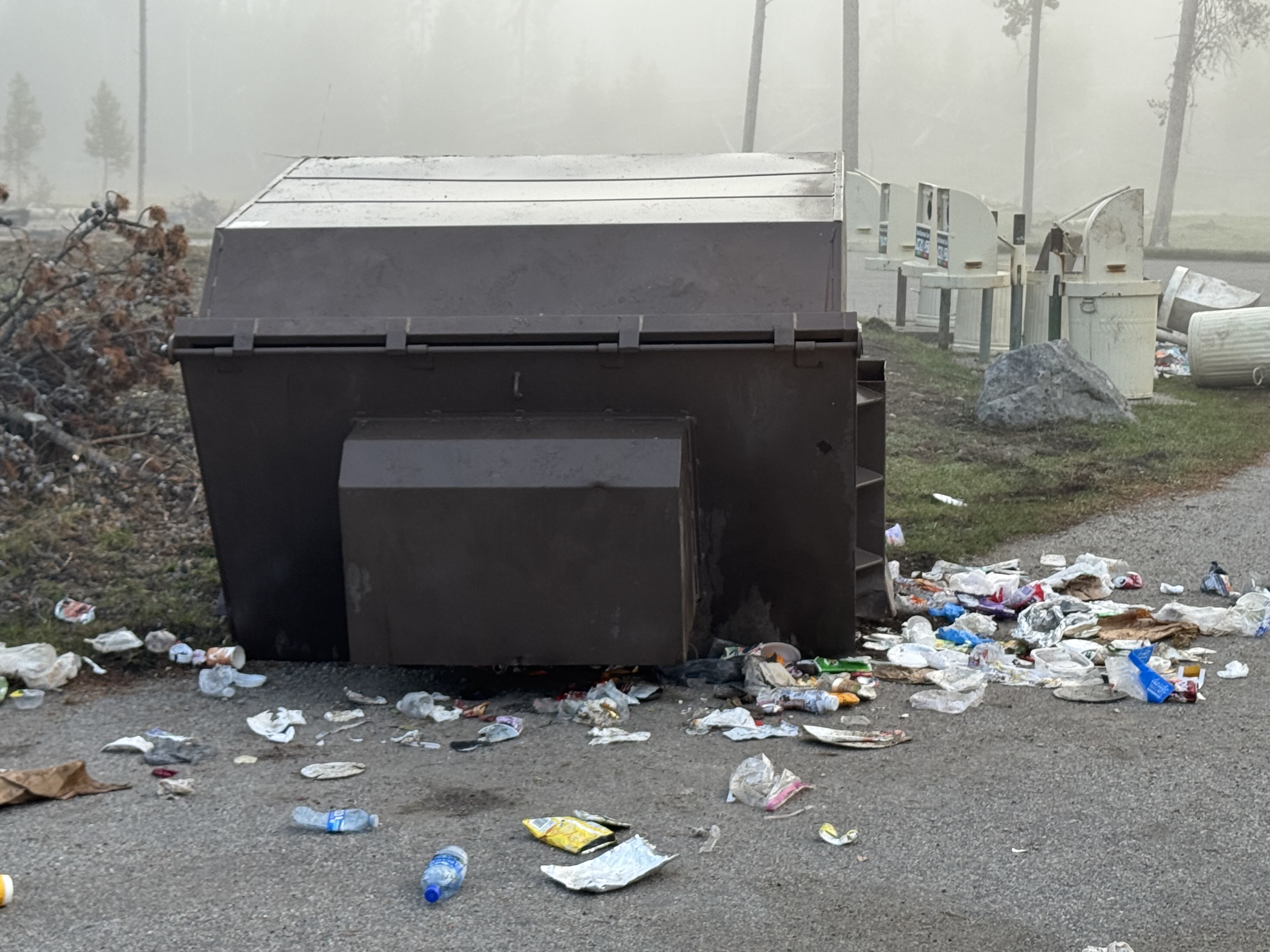Dumpster-Diving Yellowstone Grizzly Put Down
Quick Read
Dumpster-Diving Yellowstone Grizzly Put Down
Yellowstone Grizzly Euthanized After Outsmarting Dumpsters
A Tale of Instinct, Ingenuity, and Tough Choices in Bear Country
In a sobering reminder of the delicate balance between wildlife and human spaces, Yellowstone National Park officials made the difficult decision to euthanize an 11-year-old grizzly bear on May 14, 2025. This 400-pound male, known for its knack for flipping 800-pound bear-resistant dumpsters, had become a growing threat to public safety after repeatedly accessing human food. The incident, the first such management action in Yellowstone since 2017, has sparked conversations about bear behavior, park policies, and our role in protecting these majestic creatures. For Noyzy News readers, this story dives into the heart of the wild—and the tough calls that come with it.
The Grizzly’s Clever Campaign
From early April to mid-May 2025, this grizzly boar turned Yellowstone’s trash management into a personal challenge. With a mix of strength and smarts, it overturned heavy bear-resistant dumpsters at high-traffic spots like Old Faithful, the Nez Perce Picnic Area, and the Midway Geyser Basin parking lot. Not content with just the big bins, the bear also uprooted smaller trash cans cemented into the ground, feasting on human food and garbage. These raids weren’t just a nuisance—they conditioned the bear to seek out human sources, a dangerous habit that heightened risks in one of the park’s busiest areas.
Yellowstone’s bear management biologist, Kerry Gunther, expressed regret over the outcome, stating, “We go to great lengths to protect bears, but sometimes one outsmarts our defenses.” The bear’s ability to defeat infrastructure designed to withstand an 800-pound assault underscores the raw power and problem-solving skills of grizzlies, traits that make them both awe-inspiring and challenging to manage.
Why Food-Conditioning Is a Death Sentence
When bears associate humans with food, the consequences can be dire. Food-conditioned bears lose their natural wariness, venturing closer to campsites, trails, and parking lots. This behavior not only endangers visitors but also jeopardizes other bears who might learn similar habits. In Yellowstone, where over 4 million tourists flock annually, such risks are magnified. The park’s bear management plan prioritizes prevention, but when a bear crosses the line, euthanasia often becomes the only option to ensure safety.
Here’s why this grizzly’s actions led to its fate:
Public Safety Threat: Its presence in crowded areas like Old Faithful posed immediate risks to visitors, who may not carry bear spray or know how to react.
Habit Formation: Repeated access to human food reinforced the bear’s behavior, making relocation unlikely to break the cycle.
Infrastructure Damage: The bear’s dumpster-flipping spree damaged costly bear-resistant systems, straining park resources.
Precedent Setting: Allowing one bear to persist could encourage others to follow, unraveling decades of bear management progress.
Yellowstone’s Bear Management Efforts
Yellowstone has worked tirelessly to minimize human-bear conflicts since the 1960s, when open garbage dumps and hand-feeding were common. The park now boasts robust measures to keep bears wild:
Bear-Resistant Infrastructure: All campgrounds have food storage lockers, backcountry sites offer food-hanging devices, and trash cans are designed to withstand bear attacks.
Visitor Education: Rangers emphasize carrying bear spray, hiking in groups, and keeping a 100-yard distance from bears, reinforced by signs in multiple languages.
Monitoring and Relocation: Problem bears are often trapped and moved to remote areas, though repeat offenders face stricter measures.
Despite these efforts, the grizzly’s ingenuity proved too much. The last similar incident occurred in September 2017, when a bear was removed for raiding backcountry campsites at Heart Lake. The rarity of such actions—only two in eight years—highlights Yellowstone’s success in bear management, but also the inevitability of occasional failures.
The Broader Context: Grizzlies in a Changing Ecosystem
Yellowstone’s grizzly population, estimated at 700–1,000 in the Greater Yellowstone Ecosystem, has rebounded since the 1970s, when numbers dipped below 200. This recovery, while a conservation win, brings challenges. Growing bear populations mean more encounters with humans, especially as grizzlies roam beyond park boundaries into areas like West Yellowstone, where a hiker was killed in 2023. Since 2010, grizzlies have killed at least nine people in the region, though attacks remain rare compared to other park dangers like drowning or falling trees.
The loss of iconic bears like Grizzly 399, killed in a 2024 car accident, and this dumpster-diving boar underscores the fragile coexistence between humans and wildlife. On X, reactions range from sadness to frustration, with users like @tvheidihatch marveling at the bear’s strength while lamenting its fate: “GRIZZLY PROVES THERE’S NO SUCH THING AS BEAR PROOF.” Others, like @NBCMontana, stress the need for visitor vigilance to prevent such outcomes.
Lessons for Visitors and Beyond
This incident serves as a wake-up call for park-goers. Yellowstone’s grizzly bears are emerging from hibernation, hungry and on the hunt for food, making spring a critical time for caution. Rangers urge visitors to:
Store food securely in bear-resistant lockers or vehicles.
Dispose of trash only in designated bear-proof containers.
Carry bear spray and know how to use it, especially on trails.
Report any bear sightings or unsecured food to park staff immediately.
Beyond Yellowstone, the story resonates with communities in bear country. In places like Montana and Colorado, where black and grizzly bears are increasingly common, experts advocate for bear-resistant trash systems and public education to reduce conflicts. A Colorado bear’s “selfie” antics in 2023 went viral, but the underlying message was clear: a fed bear is often a dead bear.
Conclusion: A Bittersweet Reality
The euthanasia of Yellowstone’s dumpster-diving grizzly is a poignant reminder of the challenges of coexisting with wildlife. This bear’s cunning and strength were no match for the need to protect human safety and preserve the park’s delicate balance. For Noyzy News readers, it’s a call to marvel at the wildness of grizzlies while respecting the rules that keep them—and us—safe. As Yellowstone continues its conservation legacy, let’s honor this bear by learning from its story and treading lightly in the heart of bear country.







